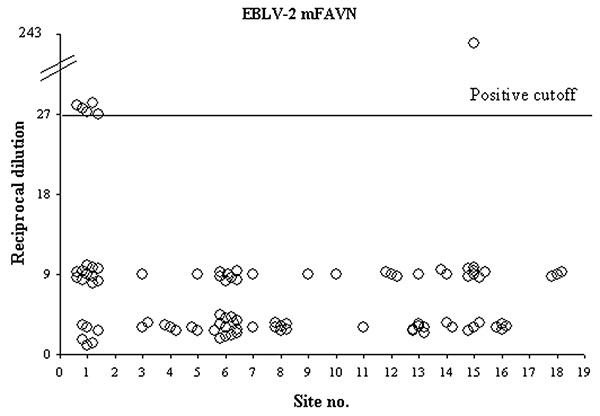Volume 11, Number 4—April 2005
Research
European Bat Lyssavirus in Scottish Bats
Figure 3

Figure 3. Antibody titers to European bat lyssavirus type 2 (EBLV-2) in bat sera from Scotland. An EBLV-2–specific modified fluorescent antibody virus neutralization (mFAVN) test was used to determine the level of circulating antibody in Daubenton bats from 19 sites in Scotland. The test uses a 3-fold dilution series (9, 27, 81, 243, etc.) and the positive/negative cutoff is a titer (reciprocal dilution) of 27. Circles on the graph represent either single serum samples or pools of sera (88 for Daubenton bats, 5 for Natterer bats, and 1 from Pipistrelle bats). All titers >27 are Daubenton bats from 2 sites (5 from site 1 and 1 from site 15). No data were available for sites 2, 17, and 19.
Page created: May 23, 2011
Page updated: May 23, 2011
Page reviewed: May 23, 2011
The conclusions, findings, and opinions expressed by authors contributing to this journal do not necessarily reflect the official position of the U.S. Department of Health and Human Services, the Public Health Service, the Centers for Disease Control and Prevention, or the authors' affiliated institutions. Use of trade names is for identification only and does not imply endorsement by any of the groups named above.